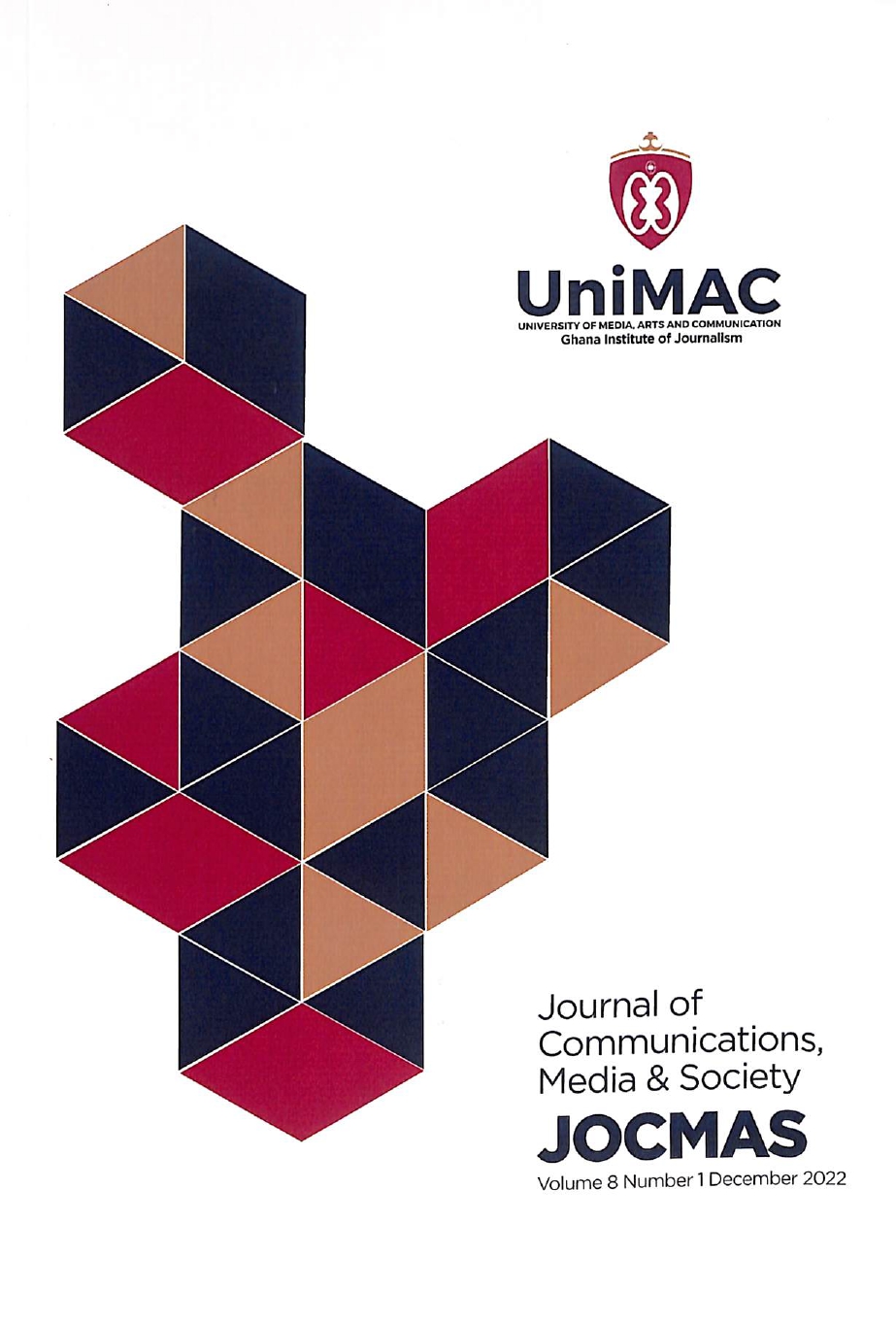African Conflicts: Memory, Trauma and Narrative (Dis)Play in Selected Memoirs
DOI:
https://doi.org/10.63772/jocmas.v3n1.3Keywords:
African Conflicts, Memory, Trauma, Narrative (Dis)Play, Selected MemoirsAbstract
This study participates in the scholarly conversation on the issue of memory and trauma within the research space of the rhetoric of conflicts in Africa. Three memoirs— Ahmad Tejan Kabbah’s Coming Back from the Brink in Sierra Leone (2010); Ismael Beah’s A Long Way Gone: The True Story of a Child Soldier (1998); and Véronique Tadjo’s The shadow of Imana: Travels in the Heart of Rwanda (2002)— serve as primary data for the paper. The theoretical framework guiding the work is Teun van Dijk’s approach to Critical Discourse Analysis (CDA), supported by Jonathan Charteris-Black’s theory of “Metaphor and political communication”. The study also employed an interpretive methodological approach that embedded the Aristotelian concepts of pathos, ethos and logos to understand the rhetorical tactics used in the memoirs to communicate various ideologies, representations and meanings of conflicts in Africa. The analysis shows that many of the problems that ignite conflicts in Africa are partly from the continent’s colonial antecedents, and partly from the African leaders themselves, who employ sophisticated narrative manoeuvres for their selfish interest or for the soul of the African rich minerals.
Downloads
Usage Statistics
- Abstract Views: 123
- PDF Downloads: 38
References
Adedeji, A. (1999). Comprehending and mastering African conflicts: The search for sustainable peace and good government. London: Zed Books.
Alabi, D. T. (2006). Emerging trends and dimensions of the Rwandan crisis. CPCD Proceedings. Retrieved June 5, 2016, from http://cpcd.viu.edu/sites/default/files/2016-edition-cpcdproceedings/Article_10.pdf
Beah, I. (2007). A long way gone: The true story of a child soldier. London: Harper Perennial.
Bourgi, A., & Casteran, C. (1991). Le printemps de l’Afrique. Paris: Hachette.
Cammack, P., Pool, D., & Tordoff, W. (1988). Third world politics: A comparative introduction. London: Macmillan Education.
Charteris-Black, J. (2009). Metaphor and public communication. In A. Musolff & J. Zinken (Eds.), Metaphor and discourse (pp. 97–115). New York: Palgrave Macmillan. DOI: https://doi.org/10.1057/9780230594647_7
Fukuyama, F. (1992). The end of history and the last man. New York: Free Press.
Glynn, P., Kobrin, S. J., & Naím, M. (1997). The globalization of corruption. In K. A. Elliott (Ed.), Corruption and the global economy (pp. 7–27). Washington, DC: Institute for International Economics.
Gourevitch, P. (1998). We wish to inform you that tomorrow we will be killed with our families: Stories from Rwanda. New York: Farrar, Straus & Giroux.
Huntington, S. (1991). The third wave: Democratization in the late twentieth century. Norman: University of Oklahoma Press.
Kabbah, T. A. (2010). Coming from the brink in Sierra Leone: A memoir. Accra: EPP.
Lakoff, G., & Johnson, M. (1980). Metaphors we live by. Chicago: University of Chicago Press.
Mamdani, M. (2001). When victims become killers: Colonialism, nativism, and the genocide in Rwanda. Princeton, NJ: Princeton University Press. DOI: https://doi.org/10.1515/9781400851720
Richards, I. A. (1965). The philosophy of rhetoric. New York: Oxford University Press.
Rodney, W. (1972). How Europe underdeveloped Africa. London: Bogle-L’Ouverture Publications.
Sesay, A., & Alao, A. (1998). Democracy and security in Africa: The changing nature of a linkage. In A. Oyebade & A. Alao (Eds.), Africa after the Cold War: The changing perspectives on security (pp. 23–42). Trenton & Asmara: Africa World Press.
Tadjo, V. (2000). The shadow of Imana: Travels in the heart of Rwanda (V. Wakerley, Trans.). Harlow: Actes Sud.
Van Dijk, T. A. (1993). Principles of critical discourse analysis. Discourse & Society, 4(2), 249–283. DOI: https://doi.org/10.1177/0957926593004002006
Downloads
Published
Issue
Section
License
Copyright (c) 2025 Journal of Communications, Media And Society (JOCMAS)

This work is licensed under a Creative Commons Attribution-NonCommercial 4.0 International License.








